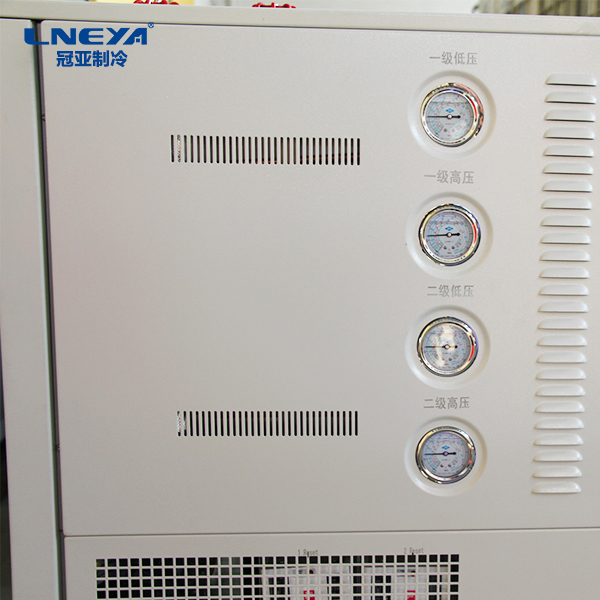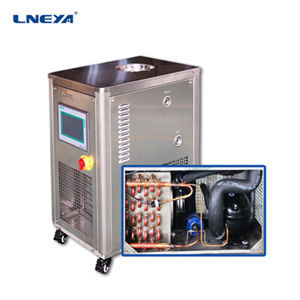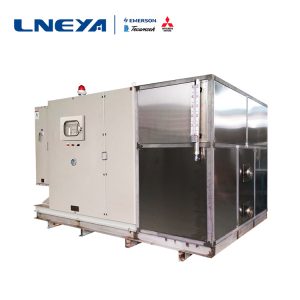Chip temperature control device detection application technology
The chip temperature control device is mainly used in the field of chip testing. For different types of chip types, the detection technology also needs attention, so it is necessary to pay attention to the practical application of different detection technologies.
The chip temperature control system has attracted the attention of chip testers because of its fast analysis speed, high sensitivity, high selectivity, fast response, robustness and miniaturization. According to different detection principles in the research of chip temperature control devices, microfluidic chip detection methods can be divided into optical detection method, electrochemical detection method and mass spectrometry detection method.
At present, laser-induced fluorescence detection and chemiluminescence detection are widely used in microfluidic chip optical detectors. The laser-induced fluorescence detection system is mainly composed of a laser, an excitation and collection optical system, and a signal acquisition and recording system. It is a very sensitive detection method, even reaching the level of single molecule detection. As an early detection method for capillary electrophoresis, laser-induced fluorescence detection plays an important role in chip capillary electrophoresis. The chemiluminescence detection method determines the content of the substance to be tested by detecting the luminous intensity of the substance. The method has the advantages of simple instrument, low background signal, high sensitivity, high selectivity and no need to excite the light source. Electrochemical detectors have high sensitivity, high selectivity, simple equipment, low cost and easy miniaturization. Therefore, microfluidic chip electrochemical detectors have been widely used in microfluidic chips. Mass spectrometry is a microanalytical method for quantitative and structural analysis of the mass and strength of sample ions. It has fast, high sensitivity and strong qualitative functions, and can obtain a lot of structural information in one analysis.
With the development of technology, microfluidic chips integrated with integration, portability, automation and low loss have become the active field and development front in chip temperature control devices. Analysts have used microfluidics. The control chip does a lot of analysis and research work, but they often use a single detection method, which inevitably has limitations in application range, detection limit, sensitivity and so on. Therefore, the use of chip temperature control devices will become a new development direction of chip testing.
With the continuous development of technology, the chip temperature control device and its detection technology are also constantly portable, and the chip temperature control device will also be active in various chip fields and continue to develop.
(Note: Some of the original content is from related papers. If infringement, please contact us in time to delete, thank you!)

Related recommendations
-
Component and component tester for special environments
2449With the continuous development of the semiconductor industry, component component testing has been widely used in components in the fields of industry, scientific research, pharmaceuticals, and chemical industry. At present, there are quite a few...
View details -
How to choose a cooling bath and maintenance points
1552The so-called refrigeration thermostat, as its name suggests, is a device that provides a constant temperature. In general, everyone also calls it an incubator, a thermostat, and so on. Only know enough to use the cooling bath better. Refrigeratio...
View details -
About vocs condensation adsorption machine resonance fault description
1640When choosing vocs condensation adsorption machine, LNEYA recommends selecting reliable vocs condensation adsorption machine equipment to avoid some simple faults, but if a similar resonance fault occurs, it needs to be solved in time. For VOCS ga...
View details -
Refrigeration effect of water-cooled chiller at -15℃
1341The main configurations of water-cooledchillers are: compressors, electrical components, water pumps, evaporators,condensers, high/low pressure controllers, high/low pressure gauges, LCDthermostats, expansion valves, antifreeze switches, hand v...
View details
 LNEYA Industrial Chillers Manufacturer Supplier
LNEYA Industrial Chillers Manufacturer Supplier














